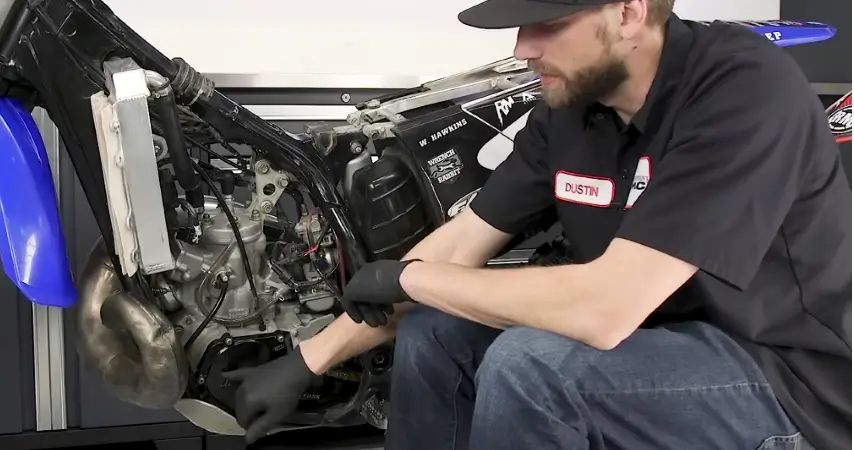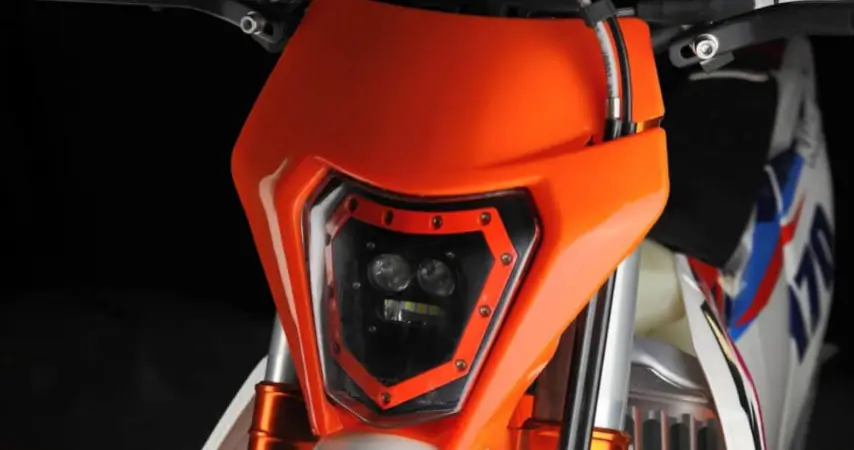Find out how to identify a faulty stator in your dirt bike with these 10 symptoms, including starting issues and abnormal engine performance.
As a dirt bike enthusiast, there’s nothing more frustrating than hitting the trails only to face electrical problems caused by a faulty stator. The stator is a vital component of your bike’s electrical system, responsible for generating power. A bad stator can lead to a host of performance issues, so it’s crucial to recognize the symptoms early. In this article, we’ll explore ten signs that may indicate your dirt bike’s stator is malfunctioning.
1. Difficulty Starting the Engine

One of the most immediate signs of a bad stator is trouble starting your bike. When you turn the ignition key, you may hear clicks, but the engine won’t crank. This issue often stems from insufficient voltage reaching the starter motor, a common consequence of a failing stator.
What To Check:
- Make sure your battery is charged.
- Inspect the connections for corrosion or damage.
- If these are in good shape, the stator might be the culprits.
2. Dimming or Flickering Lights

Another clear sign of a stator problem is dim or flickering lights. If you notice that your headlight weakens when you rev the engine or if your dash lights are inconsistent, it’s a sign that the stator might not be generating adequate power.
What To Check:
- Check the wiring harness for frays or breaks.
- Test the voltage output from the stator using a multimeter.
3. Electrical Components Not Functioning Properly
A bad stator can affect multiple electrical components, including the ignition system, lights, and even the fuel pump. If your bike’s lights are out, or if it starts misfiring while riding, the stator could be the root cause.
What To Check:
- Examine each electrical component individually.
- Replace any blown fuses.
4. Abnormal Engine Performance
If the engine sputters, hesitates, or runs unevenly, this could indicate a failing stator. A stator that is not producing enough current can lead to poor spark delivery to the ignition system, causing erratic engine behavior.
What To Check:
- Listen for unusual noises from the engine.
- Monitor the RPMs for unstable readings.
5. Overheating
A failing stator can also lead to overheating in the engine. The stator is responsible for regulating the electrical current, and an inadequate regulation can result in overheating, damaging the engine and other components.
What To Check:
- Measure the engine’s temperature with a thermometer.
- Observe for signs of coolant leaks or other overheating symptoms.
6. Burning Smell
If you detect a burning smell whether the engine is running or not, it’s a major red flag. A faulty stator can create excess heat, potentially damaging the insulation on the windings, leading to a short circuit.
What To Check:
- Inspect the stator and surrounding wiring for signs of burn or discoloration.
- Make sure to check the stator’s connectors, as they may show signs of melting due to excessive heat.
7. Voltage Output Issues
A critical test for a dirt bike’s stator is to measure its voltage output. If you’re not receiving adequate voltage while the engine is running, the stator is likely failing. For most dirt bikes, the voltage output should be around 12-15 volts.
What To Check:
- Use a multimeter to check the AC voltage while revving the engine.
- Compare the readings with the specifications in your bike’s manual.
8. Inconsistent Battery Charging
If your battery isn’t holding a charge, it could be more than just a dead battery. A malfunctioning stator can fail to charge the battery correctly, leaving you stranded without the power you need.
What To Check:
- Run a battery test to ensure it’s in good condition.
- Monitor the charging system while the bike is running.
9. Visible Damage
In some cases, you might find it’s clear that something is wrong without needing diagnostic tools. Look for visible signs of wear and tear on the stator casing, wires, or connectors.
What To Check:
- Inspect the stator for cracks, corrosion, or signs of rust.
- Check for frayed wires or loose connections.
10. Unresponsive Kill Switch
If your kill switch is unresponsive or takes several attempts to work correctly, it could be a symptom of electrical issues related to the stator. A faulty stator can send inadequate signals to the kill switch, making it inconsistent.
What To Check:
- Ensure the kill switch connections are clean and secure.
- Assess the wiring that connects the kill switch to the stator.
Recognizing signs of a bad stator—learn how to test the stator accurately.
Conclusion
Recognizing the symptoms of a bad stator is essential for maintaining your dirt bike’s performance. From difficulty starting the engine to electrical components misbehaving, these signs can help you diagnose the problem before it worsens. Regular inspections and maintenance can help you keep your bike in top shape, ensuring that your next adventure on the trails is as thrilling as ever!
If you suspect your stator is failing, it’s best to consult a professional or refer to your bike’s manual for the appropriate steps to take. Early detection can save you time and money in repairs, allowing you to enjoy more rides and fewer headaches. Stay safe, and happy riding!



Leave a Reply